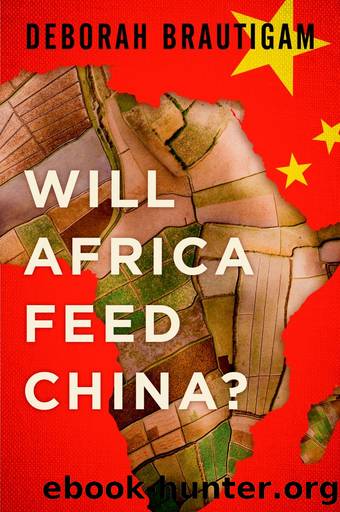Will Africa Feed China? by Brautigam Deborah;

Author:Brautigam, Deborah;
Language: eng
Format: epub
Publisher: Oxford University Press, Incorporated
Published: 2015-07-15T00:00:00+00:00
GLOBAL SUGAR
Why would an American-British venture collide with a Chinese company over sugar in a remote region of Mali? Over 100 countries produce sugar, and, in most of them, it has long been surprisingly lucrative—and political. The United States has protected sugar producers with high domestic prices, tariffs, and quotas since 1789. Europe has protected its sugar beet farmers and refineries for at least two centuries. Europe’s farmers responded by overproducing. In past decades, Europe’s huge surpluses were sold (or “dumped”) at subsidized prices on the world market, keeping prices artificially low outside its borders. The United States avoided a similar problem by setting quotas for US sugar producers and then requiring them to store—at their own expense—any production over the quota. The resulting artificially low prices in global markets spurred many other countries to protect their own sugar producers by erecting high tariff walls. These provided lucrative opportunities for smuggling and arbitrage.
The global sugar trade thus bears very little resemblance to a free market. Most sugar is consumed domestically, in the countries where it is produced. The bulk of traded sugar travels within a complicated system of quotas, preferential arrangements, and government-mediated prices. A number of developing countries have enjoyed duty-free access to the high-price US and European markets, a form of foreign assistance paid directly by consumers. This has created some perverse incentives. For example, several countries export their own sugar to Europe’s protected markets, reaping the high prices, while supplying their own consumers with imported sugar from lower cost producers in Brazil or South Africa. For the residual that is traded freely, small changes in supply, demand, or government policy can have large effects on prices. The result is a very unstable market, with trends difficult to predict.
This situation may be changing dramatically. In 2002, a group of the more efficient sugar producers—Australia, Brazil, and Thailand—complained to the WTO that Europe’s system of subsidies violated international trade rules. Three years later, the WTO judges agreed. Europe was forced to sharply trim its export subsidies and to lower its protective barriers. In 2006, the last year before reforms kicked in, the EU was one of the world’s top sugar exporters, sending out a record 11 million tons of subsidized sugar. A year later, the EU became (and remains) a net importer of sugar.
Complicating the picture further is the role sugarcane plays as a biofuel. Brazil, which has been using ethanol produced from fermented sugarcane juice to fuel its cars since 1975, now has 13 million “flex-cars” that can run on pure ethanol or an ethanol-gasoline mixture. More than 10 states in the United States require 10 percent of gasoline to contain ethanol. In 2008, the EU sent new signals for biofuel producers when it set a target of 10 percent of transport fuel to be made up of renewable energy, by 2020. Most of this would come from biofuels, including sugar. However, turning biofuel targets into laws has been contentious, as critics charged that land in poor countries was increasingly being diverted from food production to biofuels.
Download
This site does not store any files on its server. We only index and link to content provided by other sites. Please contact the content providers to delete copyright contents if any and email us, we'll remove relevant links or contents immediately.
| Arms Control | Diplomacy |
| Security | Trades & Tariffs |
| Treaties | African |
| Asian | Australian & Oceanian |
| Canadian | Caribbean & Latin American |
| European | Middle Eastern |
| Russian & Former Soviet Union |
The Secret History by Donna Tartt(16610)
The Social Justice Warrior Handbook by Lisa De Pasquale(11485)
Thirteen Reasons Why by Jay Asher(7782)
This Is How You Lose Her by Junot Diaz(5753)
Weapons of Math Destruction by Cathy O'Neil(5030)
Zero to One by Peter Thiel(4817)
The Myth of the Strong Leader by Archie Brown(4785)
Promise Me, Dad by Joe Biden(4440)
Stone's Rules by Roger Stone(4412)
Beartown by Fredrik Backman(4404)
How Democracies Die by Steven Levitsky & Daniel Ziblatt(4392)
The Fire Next Time by James Baldwin(4337)
100 Deadly Skills by Clint Emerson(4071)
A Higher Loyalty: Truth, Lies, and Leadership by James Comey(4025)
Rise and Kill First by Ronen Bergman(4008)
The David Icke Guide to the Global Conspiracy (and how to end it) by David Icke(3875)
The Farm by Tom Rob Smith(3869)
Secrecy World by Jake Bernstein(3773)
The Doomsday Machine by Daniel Ellsberg(3725)
